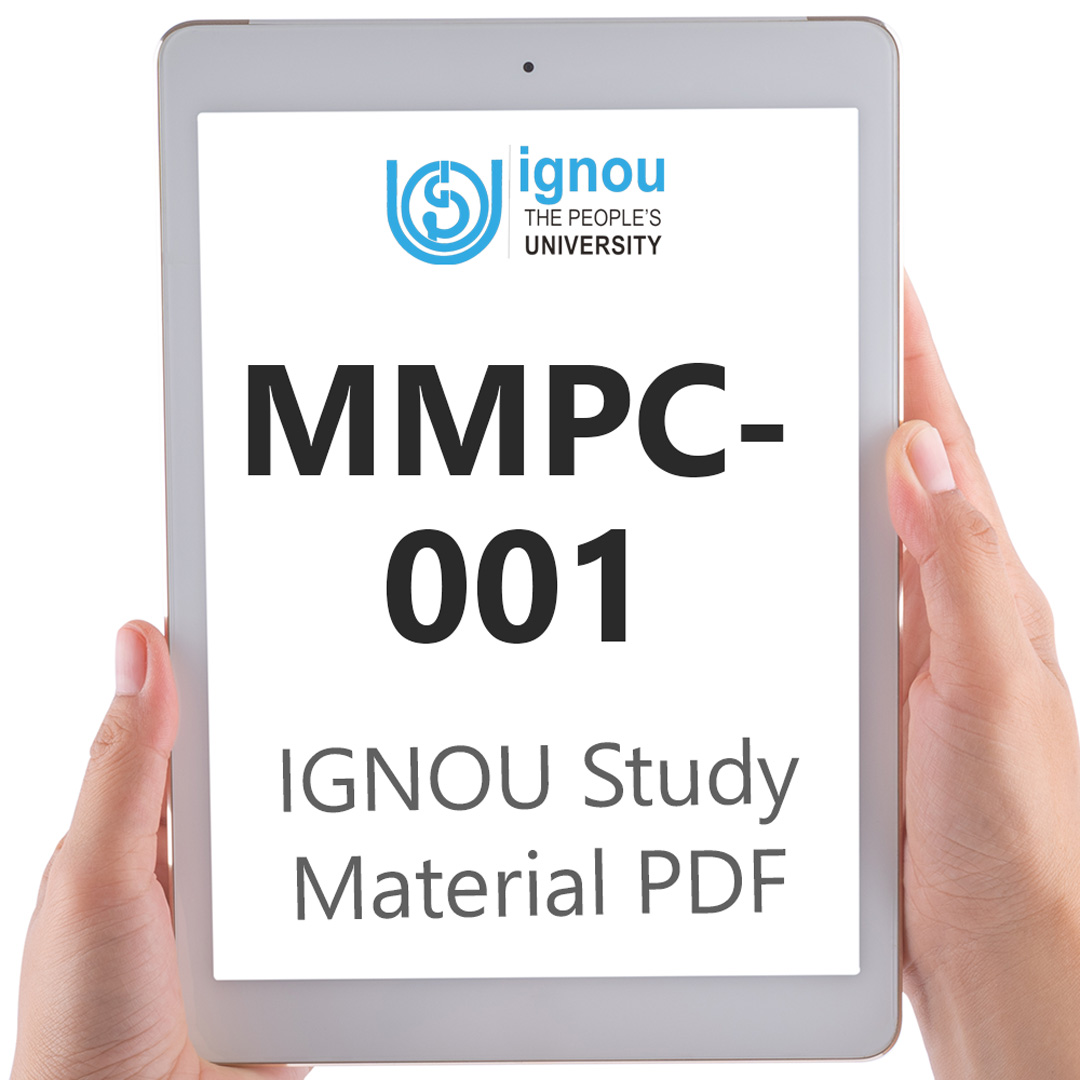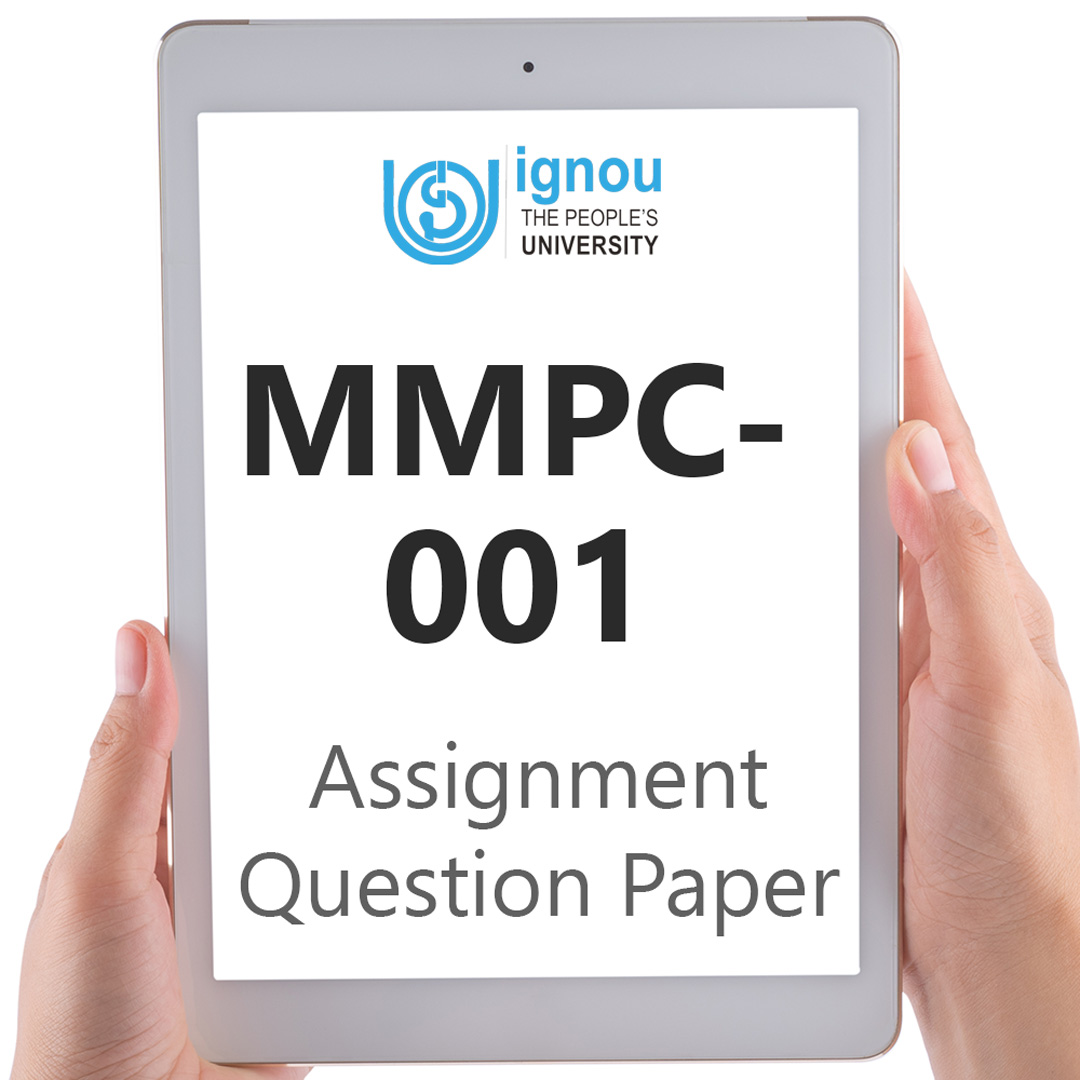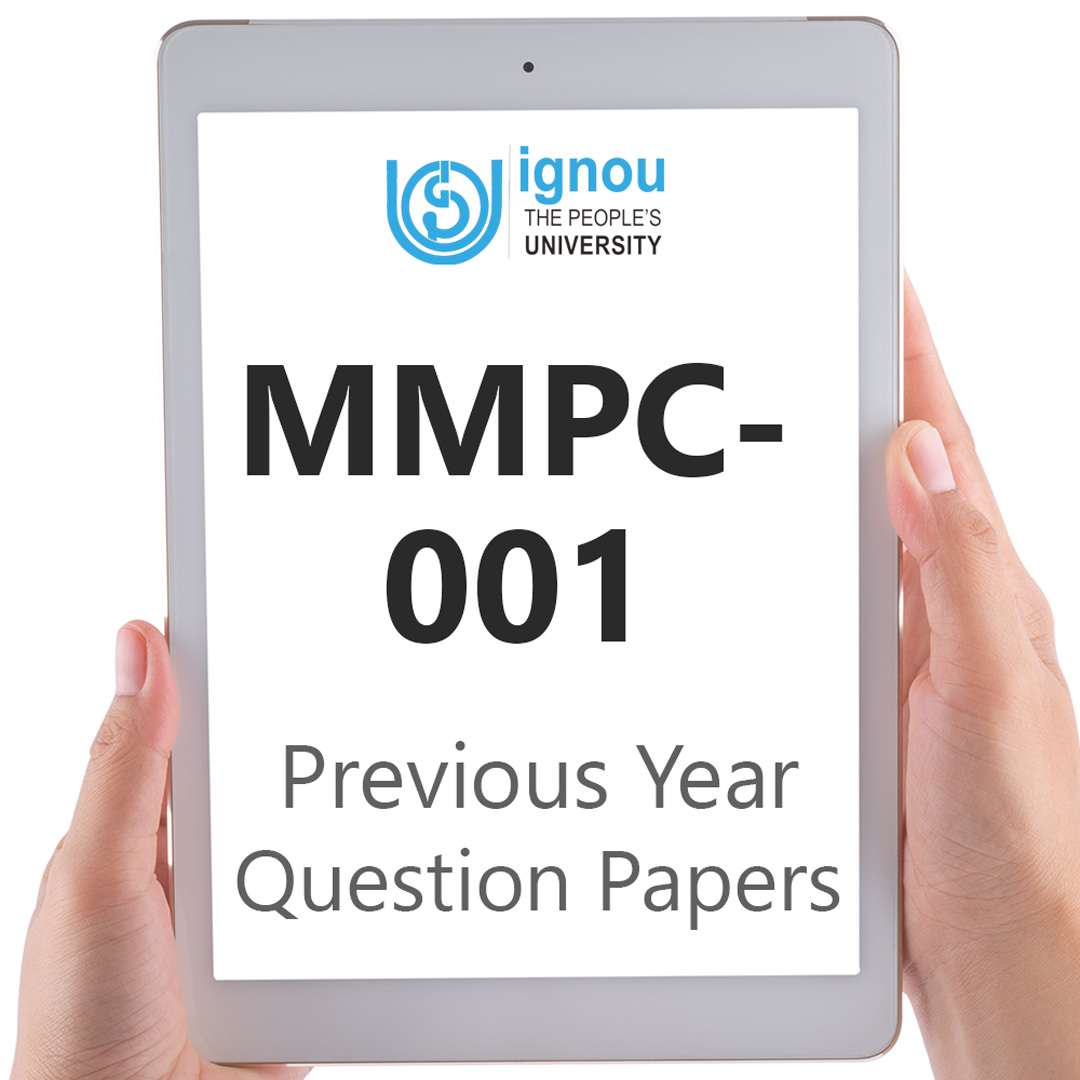If you are looking for MMPC-001 IGNOU Solved Assignment solution for the subject Management Functions and Organisational Processes, you have come to the right place. MMPC-001 solution on this page applies to 2023-24 session students studying in MBA, MBF, MBAFM, MBAHM, MBAMM, MBAOM, PGDIHRM, PGDIMM, PGDISM courses of IGNOU.
MMPC-001 Solved Assignment Solution by Gyaniversity
Assignment Code: MMPC-001/TMA/JULY/2023
Course Code: MMPC-001
Assignment Name: Management Functions and Organisational Processes
Year: 2023-2024
Verification Status: Verified by Professor
Q1) What is the meaning and definition of management and describe its characteristics. How does management differ from administration and discuss the challenges faced by the management.
Ans) Management is the process of planning, organizing, coordinating, directing, and controlling resources to achieve organizational goals effectively and efficiently. It involves making decisions, setting objectives, and allocating resources to achieve those objectives. Management ensures that an organization's resources are utilized optimally to accomplish its mission.
Characteristics of Management
Goal-Oriented: Management focuses on achieving specific organizational objectives. These goals provide a clear sense of direction and purpose to the entire organization.
Universal Application: Management principles are applicable across various industries and sectors. Whether it's a manufacturing company, a hospital, a government agency, or a non-profit organization, management principles remain relevant.
Continuous Process: Management is an ongoing process that involves planning, implementation, and evaluation. It's not a one-time activity but a continuous cycle of activities to adapt to changing circumstances.
Multidisciplinary: Management integrates knowledge from various fields like economics, psychology, sociology, and engineering. It draws from different disciplines to make informed decisions.
Involves People: Management deals with coordinating and leading individuals and teams. Effective management requires understanding human behaviour, motivation, and communication.
Difference Between Management and Administration
Challenges Faced by Management
Effective management is essential for an organization's success, but it also involves various challenges:
Globalization: In today's interconnected world, businesses often operate on a global scale. This requires managing diverse cultures, markets, and regulatory environments. Adapting to international markets and competition poses significant challenges.
Technological Advancements: Rapid technological changes impact how organizations operate. Managers must stay updated on the latest technologies and adapt them to improve efficiency and competitiveness.
Talent Management: Recruiting, retaining, and developing skilled employees is a constant challenge. In a competitive labour market, attracting and keeping top talent is vital for organizational success.
Change Management: Implementing organizational changes can face resistance from employees. Managing change effectively, communicating its necessity, and mitigating resistance is a challenge many managers encounter.
Ethical and Social Responsibility: Balancing profit motives with ethical practices and social responsibility is a critical issue. Managers must make decisions that align with ethical standards and contribute positively to society.
Environmental Sustainability: Environmental concerns and sustainability are growing challenges. Businesses are increasingly expected to adopt eco-friendly practices and reduce their environmental footprint.
Economic Uncertainty: The global economy is subject to fluctuations and uncertainties. Managers need to navigate economic challenges, such as recessions, inflation, and currency fluctuations, to ensure the financial health of the organization.
Innovation: Encouraging and fostering innovation is essential for remaining competitive. Managers need to create a culture of innovation within their organizations and adapt to market changes.
Diversity and Inclusion: Managing a diverse workforce effectively is crucial. Managers must promote inclusivity, address biases, and ensure that all employees have equal opportunities for growth and advancement.
Legal and Regulatory Compliance: Staying compliant with various laws and regulations, such as labour laws, tax codes, and industry-specific regulations, is a constant challenge for managers.
Effective management addresses these challenges by employing sound principles, adapting to change, and staying responsive to the dynamic business environment. It requires strong leadership, decision-making skills, and the ability to balance competing demands while keeping the organization's goals in focus. Successful managers not only address these challenges but also turn them into opportunities for growth and innovation.
Q2) Briefly describe the nature of Planning Process and its necessity for an organisation. Explain different types of planning and their requirement.
Ans) The planning process is a fundamental function of management that involves defining goals, determining courses of action, and allocating resources to achieve those goals. Its nature can be understood through several key characteristics:
a) Future-Oriented: Planning is inherently forward-looking. It involves setting objectives and determining what actions need to be taken in the future to achieve those objectives. It anticipates potential challenges and opportunities.
b) Systematic: The planning process follows a structured approach, typically involving a series of steps or stages. It requires a logical sequence of activities, from defining objectives to evaluating outcomes.
c) Goal-Oriented: Planning is goal-driven. It begins with the identification of specific, measurable, and achievable objectives. These goals serve as a guide for decision-making and resource allocation.
d) Flexibility: While planning provides a framework, it must be adaptable to changing circumstances. Managers need the flexibility to revise plans as new information becomes available or when unexpected developments occur.
e) Comprehensive: Effective planning considers all relevant aspects of an organization, including human resources, finances, technology, and market dynamics. It takes a holistic view of the organization's needs and capabilities.
f) Continuous Process: Planning is not a one-time activity; it is an ongoing process. As organizations evolve and as external factors change, plans must be updated and refined to remain relevant.
Necessity for an Organization
Planning is essential for organizations for several reasons:
a) Direction: It provides a clear sense of direction by setting organizational objectives. Without a plan, organizations may drift without a clear purpose.
b) Coordination: Planning helps coordinate various activities and resources within an organization. It ensures that all parts of the organization work towards common goals.
c) Efficiency: It promotes efficiency by allocating resources effectively. Proper planning minimizes wastage of resources and reduces redundancy.
d) Risk Mitigation: Planning helps identify potential risks and challenges, allowing organizations to prepare for and mitigate these issues in advance.
e) Motivation: Clear goals and plans motivate employees. Knowing the organization's objectives and their role in achieving them can boost morale and productivity.
f) Measuring Performance: Plans serve as benchmarks for measuring an organization's performance. By comparing actual results to planned outcomes, managers can identify areas that need improvement.
Different Types of Planning
Strategic Planning
Requirement: Strategic planning is long-term planning that focuses on an organization's overall direction. It requires a deep understanding of an organization's vision, mission, and values.
Purpose: It helps an organization define its strategic objectives, assess its competitive position, and determine how to allocate resources to achieve its long-term goals.
Tactical Planning
Requirement: Tactical planning is medium-term planning that bridges the gap between strategic and operational planning. It necessitates a clear understanding of an organization's strategic goals.
Purpose: It involves developing specific action plans for various departments or units within the organization. Tactical planning ensures that resources are used efficiently to support strategic goals.
Operational Planning
Requirement: Operational planning is short-term planning focused on day-to-day activities. It requires a detailed understanding of an organization's processes and resources.
Purpose: It involves developing plans and procedures to achieve specific, immediate objectives. Operational planning ensures that daily tasks align with tactical and strategic goals.
Contingency Planning
Requirement: Contingency planning is necessary when an organization faces potential crises or emergencies. It involves identifying possible risks and vulnerabilities.
Purpose: It aims to develop strategies and responses to address unexpected events. Contingency planning ensures that an organization can respond effectively to adverse situations.
Financial Planning
Requirement: Financial planning requires a thorough understanding of an organization's financial status, including budgets, revenues, and expenditures.
Purpose: It involves creating financial forecasts, budgets, and investment plans to ensure that an organization's financial resources are managed wisely.
HR Planning
Requirement: HR planning necessitates knowledge of an organization's workforce, including skills, capabilities, and future needs.
Purpose: It involves strategies for recruiting, training, and retaining employees. HR planning ensures that an organization has the right talent to achieve its goals.
Marketing Planning
Requirement: Marketing planning requires an understanding of market trends, consumer behaviour, and competitive forces.
Purpose: It involves developing marketing strategies to promote products or services. Marketing planning helps organizations reach target audiences and achieve sales objectives.
Q3) Describe and discuss modern theories of leadership. What is the difference between successful and an effective leader? Explain with examples.
Ans) Modern leadership theories have evolved to encompass a broader and more nuanced understanding of leadership. These theories recognize that leadership is not solely about individuals but is influenced by situational and contextual factors.
Some prominent modern theories of leadership:
Transformational Leadership: This theory emphasizes the leader's ability to inspire and motivate followers to achieve exceptional outcomes. Transformational leaders often exhibit charisma, vision, and a commitment to personal development. They encourage creativity and innovation among their team members. For example, Steve Jobs of Apple is considered a transformational leader for his ability to inspire Apple's employees to create innovative products like the iPhone.
Transactional Leadership: Transactional leaders focus on exchange relationships with their followers. They use rewards and punishments to motivate their team members. Transactional leadership is effective in structured and stable environments where clear rules and expectations are necessary. For instance, a manager offering bonuses for meeting sales targets is practicing transactional leadership.
Situational Leadership: Developed by Paul Hersey and Kenneth Blanchard, this theory suggests that leadership styles should be adapted to the maturity and competence levels of followers. It offers a flexible approach, where leaders adjust their leadership style based on the specific situation. For example, a leader may adopt a more directive approach with a new team member and a more supportive approach with an experienced one.
Servant Leadership: This approach emphasizes leaders serving the needs of their followers. Servant leaders prioritize the well-being and development of their team members, which, in turn, leads to higher employee satisfaction and performance. A notable example is Mahatma Gandhi, who selflessly served the Indian people and led the country to independence.
Authentic Leadership: Authentic leaders are genuine, transparent, and true to themselves. They build trust through their honesty and integrity. Authentic leaders are seen as credible and are more likely to gain the trust and loyalty of their followers. Oprah Winfrey is often cited as an example of an authentic leader due to her openness and authenticity in both her personal and professional life.
Difference Between Successful and Effective Leaders
Modern leadership theories recognize the complexity of leadership, and effective leadership goes beyond immediate success. Effective leaders prioritize ethical, sustainable, and process-oriented leadership that benefits both themselves and their organizations over the long term. Success can be fleeting, but effectiveness is enduring and contributes positively to the well-being of individuals and organizations.
Q4) Describe different types of managerial decisions and the steps and the techniques used for decision making. Discuss Individual Vs Group decision making.
Ans) Managers make various types of decisions based on their scope, impact, and time frame.
Some common types of managerial decisions:
Strategic Decisions: These decisions are long-term and have a significant impact on the organization's overall direction. They involve setting goals, defining the organization's mission, and determining strategies for growth and sustainability.
Tactical Decisions: Tactical decisions are medium-term decisions that bridge the gap between strategic and operational decisions. They focus on how to implement the organization's strategic plans effectively. For example, choosing marketing channels for a new product launch is a tactical decision.
Operational Decisions: These decisions are short-term and deal with day-to-day activities. They are essential for smooth and efficient routine operations, such as managing daily production schedules or employee work assignments.
Programmed Decisions: Programmed decisions are routine decisions made in repetitive and well-structured situations. They often follow established procedures or guidelines, such as processing payroll or inventory replenishment.
Non-Programmed Decisions: Non-programmed decisions are unique and complex decisions that arise in unfamiliar or unpredictable situations. They require creative problem-solving and critical thinking. For example, deciding to enter a new market or develop a new product is a non-programmed decision.
Steps in the Decision-Making Process
The decision-making process typically involves the following steps:
Identify the Problem or Opportunity: The first step is to recognize the need for a decision. This may involve identifying a problem that needs to be solved or recognizing an opportunity that can be pursued.
Gather Information: Collect relevant data and information to understand the situation fully. This step may require research, data analysis, and consultation with experts.
Generate Alternatives: Brainstorm and develop multiple potential solutions or courses of action. Encourage creativity and diverse perspectives to explore different options.
Evaluate Alternatives: Assess the pros and cons of each alternative. Consider factors such as feasibility, risks, costs, and potential outcomes.
Decide: Select the most suitable alternative based on the evaluation. This decision should align with the organization's goals and values.
Implement the Decision: Put the chosen plan into action. Allocate resources, assign responsibilities, and create a timeline for execution.
Monitor and Evaluate: Continuously assess the implementation of the decision. Measure progress and outcomes against the established criteria.
Feedback and Adjustments: Based on monitoring and evaluation, make necessary adjustments to the plan. Feedback loops help improve decision-making over time.
Techniques Used for Decision Making
Various techniques and tools can aid in the decision-making process, including:
SWOT Analysis: Analysing an organization's strengths, weaknesses, opportunities, and threats to inform strategic decisions.
Cost-Benefit Analysis: Assessing the costs and benefits of different alternatives to determine the most cost-effective option.
Decision Trees: Visual representations that help assess possible outcomes and probabilities associated with each decision path.
Quantitative Models: Using mathematical models and simulations to analyse data and make predictions.
Brainstorming: Encouraging a group of individuals to generate creative ideas and potential solutions collectively.
Scenario Planning: Preparing for multiple potential future scenarios and developing plans for each.
Individual Vs. Group Decision Making
Q5) Describe the importance of organisational communication and the barriers to effective communication. How can organisations take precautions to make communication effective? Discuss with examples.
Ans) Effective organizational communication is vital for the smooth functioning and success of any organization.
It serves several crucial purposes:
Information Dissemination: Communication ensures that essential information, such as goals, strategies, policies, and performance feedback, reaches employees and stakeholders. This helps align everyone with the organization's objectives.
Decision-Making: Communication enables informed decision-making by providing data, analysis, and input from various levels of the organization. It helps leaders make strategic choices based on available information.
Coordination: Effective communication coordinates the activities of different departments and teams within the organization. It ensures that everyone is working towards common goals.
Conflict Resolution: Open and transparent communication allows for the early identification and resolution of conflicts. It provides a platform for discussing concerns and finding mutually agreeable solutions.
Employee Engagement: Employees who feel well-informed and heard are more engaged and motivated. Effective communication fosters a positive work environment, leading to higher job satisfaction and productivity.
Innovation: Communication channels can be used to gather ideas, suggestions, and feedback from employees. This input can drive innovation and improvement within the organization.
Barriers to Effective Communication
Several barriers can hinder effective organizational communication:
Lack of Clarity: Unclear or vague messages can lead to misunderstandings and misinterpretations.
Noise: Noise in the communication process can disrupt the message, making it difficult for the receiver to understand.
Semantic Barriers: Differences in language, jargon, or terminology can create confusion.
Filtering: When information is intentionally withheld or distorted as it moves up or down the organizational hierarchy, it's referred to as filtering.
Emotional Barriers: Negative emotions such as fear, anger, or mistrust can impede communication.
Physical Barriers: Geographical distances, time zones, and technological issues can hinder communication in global organizations.
Cultural Differences: Cultural norms, values, and communication styles can vary widely and lead to misunderstandings.
Precautions for Effective Communication
Organizations can take several precautions to enhance communication effectiveness:
Clear Communication Channels: Establish clear and accessible channels for communication, including face-to-face meetings, emails, intranet, and messaging apps.
Training: Provide communication training to employees, focusing on active listening, feedback, and conflict resolution.
Feedback Mechanisms: Create feedback loops where employees can provide input and express concerns. Act on this feedback to demonstrate responsiveness.
Consistency: Ensure that messages are consistent across all levels of the organization. Avoid contradictory information.
Transparency: Foster a culture of transparency by openly sharing information about the organization's goals, performance, and challenges.
Use of Technology: Leverage technology for efficient communication, especially in global organizations. Video conferencing, webinars, and collaboration tools can bridge geographical barriers.
Examples
1) Apple Inc.: Apple's product launches, such as those for the iPhone, are examples of effective communication. The company builds anticipation through teasers and invitations, delivers clear and engaging presentations, and engages with its audience through live streams. This communication strategy generates excitement and boosts product sales.
2) Google: Google encourages employee feedback through platforms like Google Surveys and internal forums. This feedback often leads to product improvements and innovations, demonstrating the value of listening to employees.
Effective organizational communication is essential for achieving strategic objectives, fostering employee engagement, and resolving conflicts. Organizations should proactively address barriers to communication and implement strategies to enhance clarity, transparency, and feedback. Successful examples from companies like Apple, Google, Amazon, and Tesla demonstrate the impact of effective communication on organizational success.








